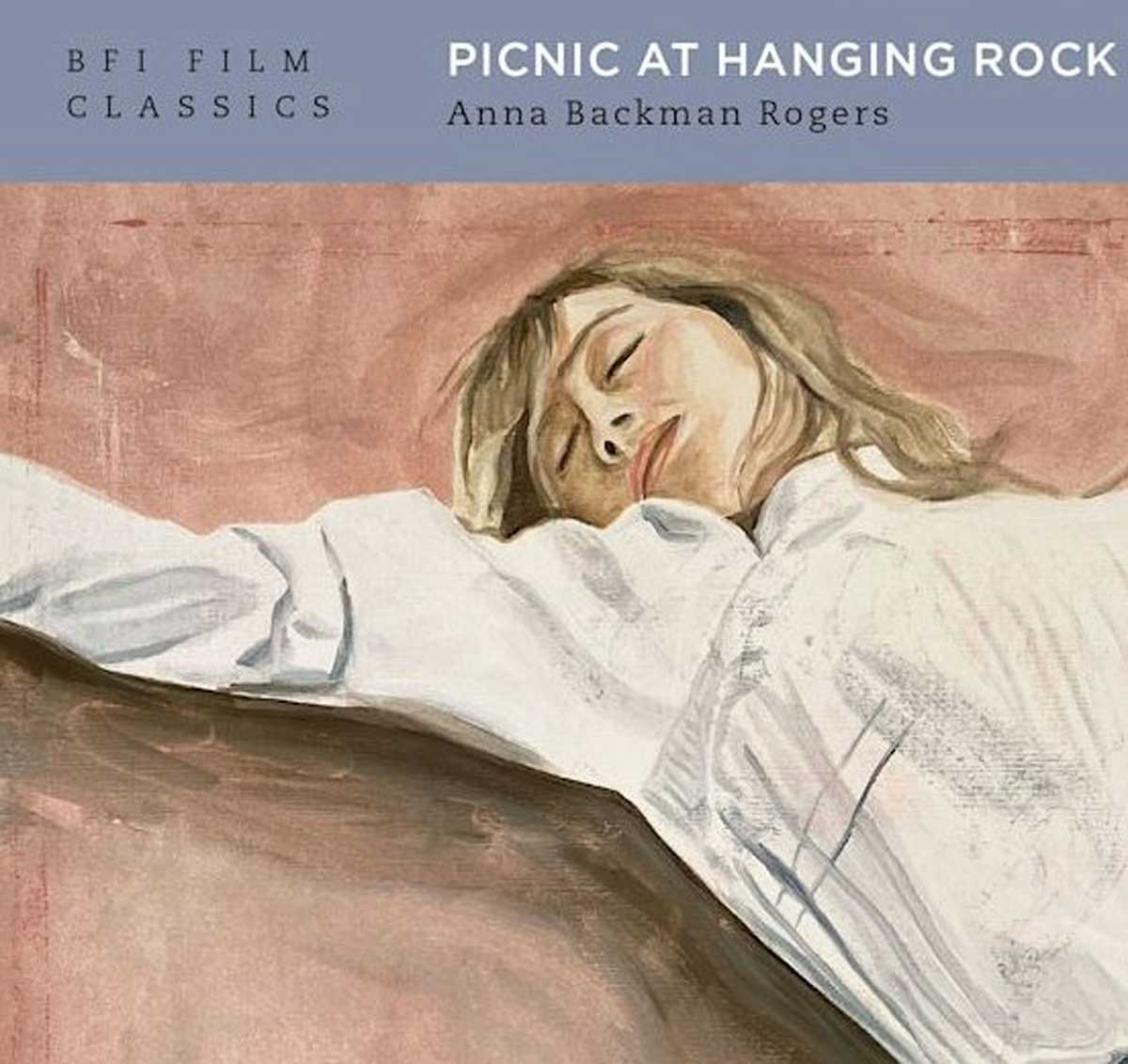Picnic at Hanging Rock is a core film in the Australian New Wave, a classic of rural horror, a lyrical dream known for its unnerving beauty. It is a film that entices, and intrigues, and haunts.
In this addition to the BFI Classics series, Anna Backman Rogers sets out the connections between the film, its production, contexts and themes and provides a wealth of interesting and useful detail on the film, its techniques and its contexts. Backman Rogers builds on her existing work examining the aesthetics of filmmakers such as Sofia Coppola by focusing her analysis on the look and style of the film and the way that it consciously engages with specific artistic styles. This, she argues in this and her previous work, is not simply style for style’s sake, but the use of an attractive surface in order to critique the society that finds these particular artistic constructions appealing. For example the way that Peter Weir presents the Heidelberg School-influenced image of the white-clad girls picnic and cuts to a close-up of their Valentine’s Day cake crawling with ants, showing that the apparently static Victorian settler society conceals, on closer inspection, bustling other life beneath.
This analysis demonstrates the ways that the film serves both to show and to critique patriarchal and settler culture. For example, Backman Rogers draws attention to the way that the film draws on the aesthetics of David Hamilton, a British photographer and filmmaker working mostly in Europe, whose eroticised soft focus images of girls and young women were hugely popular in the 1970s. Backman Rogers argues that the film uses that imagery to make the viewer complicit in the sexualisation of white women (particularly very young, white women) in order to comment on these pervasive attitudes. This is part of the film’s attractive surface and appeal to ideas of ‘culture’, which include its elegant, ‘heritage film’ style presentation. Backman Rogers argues that there is a conscious use of these styles in order to present a surface sheen that hides the hollowness of Australian settler culture and its disconnection from the land.
This close analysis of the aesthetics of the film is the book’s greatest strength, including a very useful, careful consideration of the soundscape of the film, incorporating sound effects as well as its distinctive mix of music. Two parts of the film receive sustained close analysis, drawing out the ways they interconnect with the remainder, with artistic influences, and with the film’s themes: the picnic scene itself, and the sequence of the girls climbing the Rock. By drawing out the various artistic associations and influences that Weir and his cinematographer engage with throughout the film, Backman Rogers demonstrates their presentation of a European settler ‘artistic’ look which is undercut and disrupted by its encounter with Australia, as a landscape teeming with life.
The shortness of the book combined with the requirement of all BFI Classics to provide ‘an argument for the film’s “classic” status, together with discussion of its production and reception history, its place within a genre or national cinema, an account of its technical and aesthetic importance’ before getting to any other kind of analysis does seem to have led to some constraints and issues with structuring. The book moves back and forth through the film, but is primarily concerned with the first 35 minutes, up to the girls’ disappearances. Some threads are introduced, followed, dropped, and picked up again, where there was the potential for a stronger through-line and less repetition.
The book is well-illustrated with shots from the film, but these are not labelled, with the exception of a shot from the deleted scenes, and are not directly referred to in the text. The demands of layout mean that they may not be placed directly alongside the most relevant sections of the text. Considering the importance of the aesthetic here to Backman Rogers’ analysis, a more direct connection between images and text would have been beneficial, although again this may be an issue more with the series than this particular book. The images also occasionally suggest an absence of relevant detail from Backman Rogers’ analysis, such as the still on page fifty which shows the Aboriginal tracker brought in by the police for the search. As Backman Rogers deals with indigenous absence as a key theme of the film, engaging with the brief appearance of the character could have helped support and develop this theme. Indeed, the presence of this still alongside Backman Rogers’ commentary on indigenous absence indicates a certain neglect of Aboriginal presence in the film.
For those interested in the film as an adaptation, there is little about how the film interprets the novel. The section on the legacy of the film, particularly in relation to The Falling (2014), The Virgin Suicides (1999) and Innocence (2004) is a scant paragraph, which makes no mention of the 2018 television adaptation of the novel and its alternative approach to style and themes. Like consideration of the adaptation process, this is not really the focus of Backman Rogers’ book, but could have been profitably developed in a longer study.
Overall, this book provides an extremely useful insight into this film, its production, and its themes. Picnic at Hanging Rock’s status as a product of as well as a comment on its cultural context is made very clear, opening out the interpretation of a narratively opaque film with a particular focus on the construction of ideas of white girl/womanhood in Australian settler culture. As a necessarily brief guide, this draws out a lot of key ideas about the film and how it can be understood as social critique, particularly illuminating the ways that its horror and its lasting effect stems from its combination of aesthetic style with its themes.
Competing Interests
The author has no competing interests to declare.

